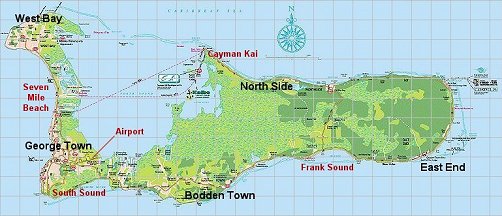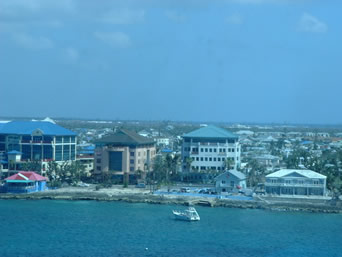|
|||||||||||||||||||
| Grand Cayman is the largest of 3 islands that make up the Cayman Islands. Grand Cayman covers 76 square miles, Cayman Brac (Bluff) encompasses 14 square miles, and Little Cayman covers 10 square miles. Populations are 38,600 for Grand Cayman, 1,300 for Brac, and 115 for Little Cayman. | |||||||||||||||||||
|
|||||||||||||||||||
In 1503 Columbus named these islands the Tortugas because their only inhabitants were large numbers of turtles. The islands later became known as the Caymanas, the Carib Indian word for crocodile. The islands had no inhabitants until 1655, though they were visited in the 1500s and 1600s by ships, including pirate ships. The first settlers were deserters from the English army, which was then capturing Jamaica. They were later followed by other settlers, also primarily from the British Isles. Tourism today is a major business with 500,000 people visiting each year. The other big business is finance with some 500 banks based there, holding more than $463 billion in assets. There are also nearly 34,000 registered companies who take advantage of the favorable tax status: No local taxes - there is currently no income tax, non resident tax, capital gains or other similar taxes in the Cayman Islands; Privacy - no reporting of income or ownership to any government agency. The island was hit really hard last fall by a hurricane and it is still recovering. There are still 10 to 12,000 destroyed vehicles that have to be removed from the island. Our ship "dropped anchor" a few miles out from shore due to the reefs and resultant shallow waters. We were then ferried by tender to the docks at Georgetown. We were scheduled for a tour and we went first on a "semi-sub" that allows you to sit under water and view the fish, etc. Then we went to Hell and back. On the way back we stopped at a Green Sea Turtle farm. |
|||||||||||||||||||
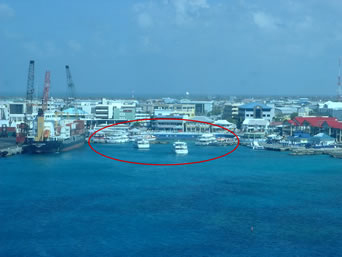 |
|
||||||||||||||||||
| All the cruise ships have to unload their passengers in the same small area circled in red. It gets pretty crowded. | A close-up of Georgetown. Look carefully in the background and you can see the sea on the other side and the white breakers. | ||||||||||||||||||
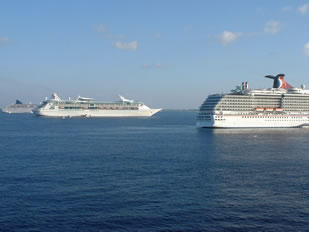 |
|||||||||||||||||||
LEFT-Cruise ships lined up ready to disgorge their passengers. The one closest has a water slide by the smokestacks. none of those are our ship. RIGHT-The main street near the docks. The fact that you're in a Brit Commonwealth is apparent from the traffic patterns here. |
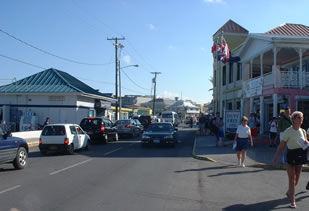 |
||||||||||||||||||
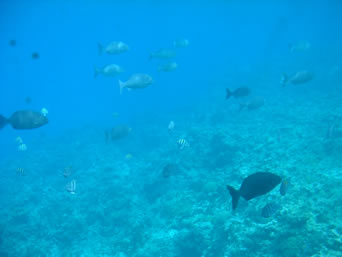 |
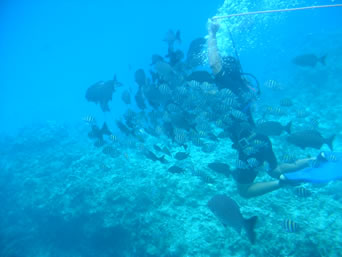 |
||||||||||||||||||
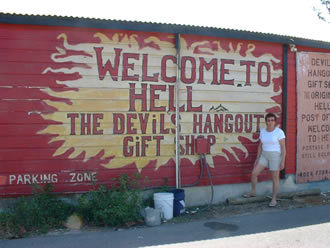 |
As Johnny Cash said, "It's a hell of place, this place called Hell." He was talking about Texas and we're talking about a really small town (6 buildings?) on the Grand Cayman Island. Needless to say, everyone had to mail postcards from there. The landscape appears to be the main reason for the name. The top right photo shows the topography. It looks very volcanic, but I believe it's coral. Our tour bus is on the left. The little green thing on the right is, of course, an iguana. The folks in Panama told us that the green ones are edible; the gray ones aren't. What's it taste like? What else but chicken? |
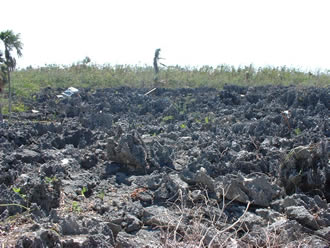 |
|||||||||||||||||
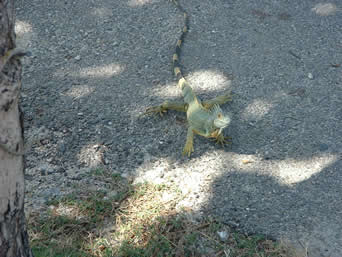 |
|||||||||||||||||||
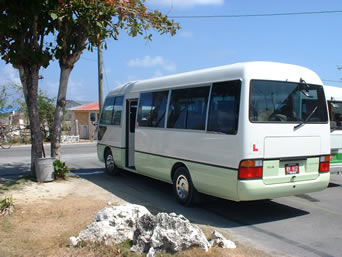 |
|||||||||||||||||||
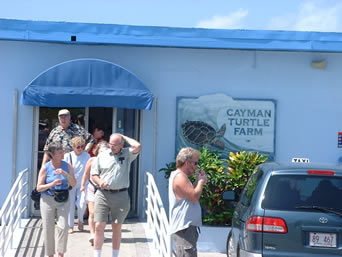 |
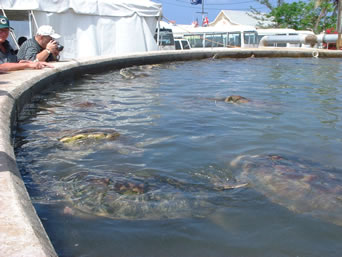 |
||||||||||||||||||
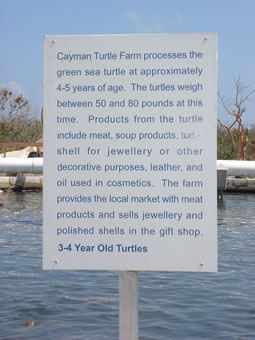 |
The Green Sea Turtles were once an endangered species but are now holding their own. These large turtles can reach up to 500 - 600 pounds and approximately 4 - 6 feet in length. They are found throughout the world, predominantly in tropical and subtropical waters. Over 20,000 green sea turtles call the Cayman Turtle Farm home. The Cayman Turtle Farm is crucial in helping to maintain Grand Cayman's green sea turtle population by breeding sea turtles and releasing them into the sea. Prior to the hurricane there was a large breeding area on the beach, but it was destroyed. As you can see from the sign, not all the turtles raised here are released to the wilds. | 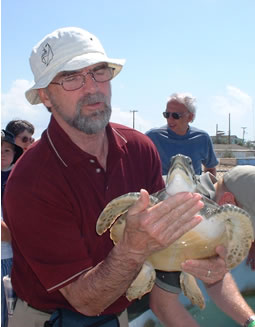 |
|||||||||||||||||
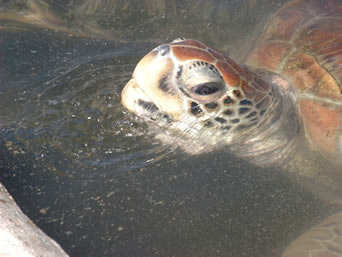 |
|||||||||||||||||||
